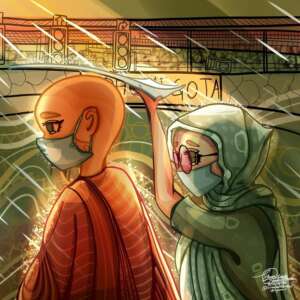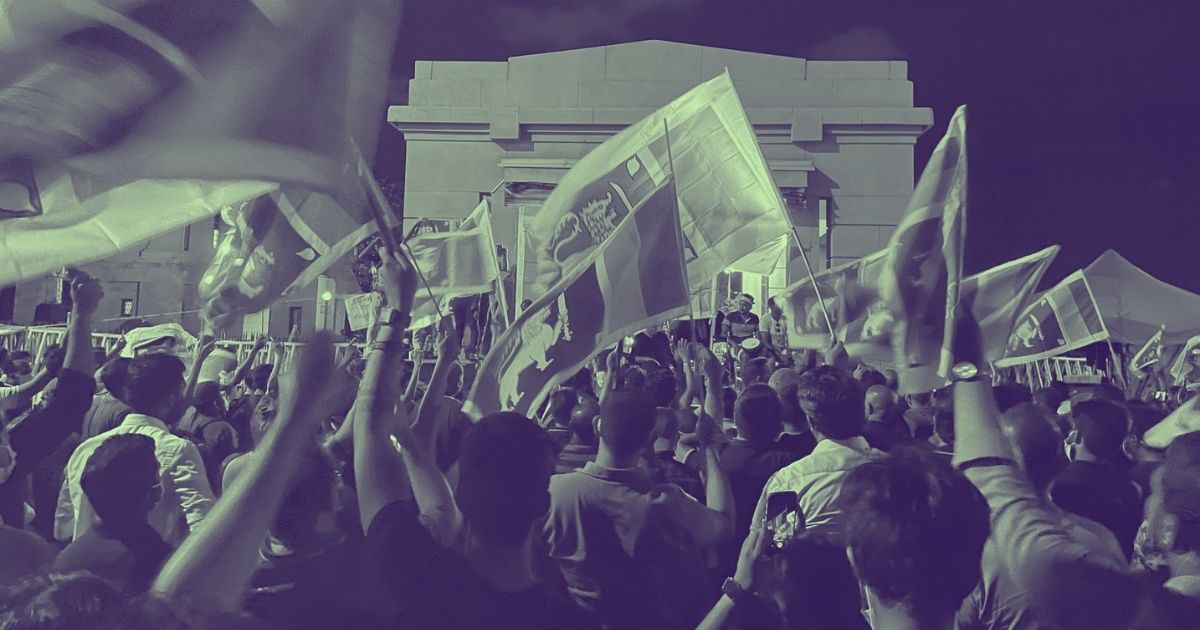Sri Lanka’s current economic crisis has decimated life for the country’s citizens. Whether it’s the hours-long power cuts or the equally stressful queues at filling stations, the problems only seem to compound. Among this long list of calamities is the medical crisis. Sri Lanka’s health sector is running out of essential medicine and other medical equipment. In light of this, there are already a number of citizen-led initiatives underway to gather funds and resources to tackle the problem. One of the more recent efforts is Hyperglade’s Heal Sri Lanka NFT initiative.
The Heal Sri Lanka NFT Collection is set to feature 20 different works from creatives which will total up to 10,000 NFTs. Each NFT will be priced at $100 which means the total value of the collection will have a $1 million pricetag.
Of the earnings, 90% will be donated to procuring essentials for the medical crisis while the rest will go to the respective artists. With regard to the actual allocation, Hyperglade mentions that it will coordinate with Watchdog’s Elixir platform, the GMOA, and the doctors on ground.
The project hopes to attract attention from crypto and NFT enthusiasts in the South Asian region as well as Sri Lankans across the globe.
Wait, what’s an NFT?
Non-fungible tokens, or better known as NFTs, have been in public conversation in recent times and for good reason. The technological trend has seen a massive boom accounting for a $41 billion market in 2021 itself. But what is it really?
NFTs are digital content that are linked to the blockchain, the same technology that enables cryptocurrencies like bitcoin or ethereum. The tokenization of assets is one of blockchain’s best-known uses. These tokenized assets are essentially programmable digital units of value recorded on a digital ledger. NFTs fall into this category.
However, assets like bitcoin are fungible, meaning you could trade one bitcoin for another and it will be the same just like regular currency notes. Conversely, NFTs are not mutually interchageable. These work similar to something like a rare one of a kind collectible which are non-fungible by design. Trading or replacing such an item for another won’t be the same.
But there are many types of NFTs. The most commonly used NFT is metadata that includes details encoded with a digital version of the tokenized work in question. That means when it comes to most NFTs, you’re buying the metadata associated with a particular work and not the work itself. But one may question if people are really spending millions of dollars on what essentially comes down to a metadata file. But that’s what most of these NFTs are in actuality.
NFTs for charity
Nevertheless, the idea of using NFTs for charitable causes has seen growing interest in recent times. In fact, the 2021 report of The Giving Block notes that charities received $12.3 million in donations from known NFT projects in the year. That shouldn’t be surprising considering Beeple, who currently holds the “most expensive NFT ever sold” title sold another NFT that fetched $6 million where the proceeds went to the Open Earth Foundation. Further, even celebrities like Ellen DeGeneres and Pelé have utilized NFTs for charitable causes.
But it’s not just the typical crypto enthusiasts and celebrities, organizations like UNICEF has also taken to NFTs for charity. Back in December 2021, UNICEF announced that it will launch 1,000 NFTs in celebration of its 75th anniversary. Proceeds from this NFT collection are directed at initiatives of the UNICEF Global Office of Innovation such as Giga.

It’s a space that clearly continues to draw attention and Heal Sri Lanka hopes to lean on this in hopes of raising the funds.
The Heal Sri Lanka of it all
But one major criticism with NFTs is the negative environmental impact due to high energy consumption issues. Heal Sri Lanka looks to work around this by utilizing the Solana blockchain. Unlike Bitcoin, Ethereum and other high-energy consuming blockchains, Solana offers a more sustainable alternative as it’s a carbon neutral blockchain.
Then what about the transparency part of it? Questions of transparency and accountability are a major area of concern, particularly when it comes to fund raising for charitable causes. True, the blockchain does bring in an element of transparency from a technological perspective. But to offer better transparency, Hyperglade cofounder Kalana Muthumuni states that the initiative “will be providing proof of costs for each donation made.”
Regardless of where you stand with NFTs, the Heal Sri Lanka project offers a unique opportunity in tapping into an audience that may otherwise not pay attention to something like Sri Lanka’s economic crisis. Additionally, every NFT that gets resold will generate 5% back to Heal Sri Lanka, which Hyperglade mentions will be redirected towards the medical crisis. Either way, time will tell how effective the initiative will pan out.
The complete collection of artworks for Heal Sri Lanka will be unveiled on May 20, 2022 on the Heal Sri Lanka website.







GIPHY App Key not set. Please check settings